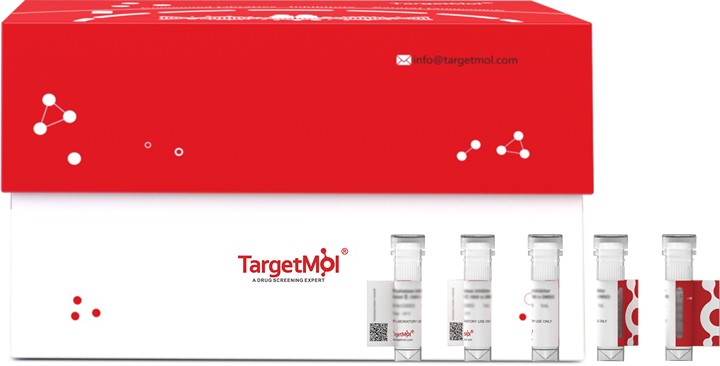Shopping Cart
- Remove All
 Your shopping cart is currently empty
Your shopping cart is currently empty

CD4 Protein, Human, Recombinant (aa 1-208, His) is expressed in HEK293 mammalian cells with His tag. The predicted molecular weight is 21.7 kDa and the accession number is A0A4Y5UGE4.

| Pack Size | Price | Availability | Quantity |
|---|---|---|---|
| 100 μg | $696 | 7-10 days |
| Biological Activity | 1. Measured by its ability to bind biotinylated GP140-His in a functional ELISA.
2. Measured by the ability of the immobilized protein to support the adhesion of NIH-3T3 mouse embryonic fibroblast cells. When 5×10^4 cells/well are added to CD4-coated plates (0.8 μg/mL and 100 μl/well), approximately >30 % will adhere specifically after 30 minutes at 37℃. |
| Description | CD4 Protein, Human, Recombinant (aa 1-208, His) is expressed in HEK293 mammalian cells with His tag. The predicted molecular weight is 21.7 kDa and the accession number is A0A4Y5UGE4. |
| Species | Human |
| Expression System | HEK293 Cells |
| Tag | C-His |
| Accession Number | P01730 |
| Synonyms | CD4mut,CD4 molecule |
| Construction | A DNA sequence encoding the human CD4 (NP_000607.1) N-terminal two domains (D1D2) (Met 1-Ser 208) was fused with a polyhistidine tag at the C-terminus. Predicted N terminal: Lys 26 |
| Protein Purity | > 94 % as determined by SDS-PAGE |
| Molecular Weight | 21.7 kDa (predicted); 26 kDa (reducing conditions) |
| Endotoxin | < 1.0 EU/μg of the protein as determined by the LAL method. |
| Formulation | Lyophilized from a solution filtered through a 0.22 μm filter, containing PBS, 10% glycerol, 1 mM EDTA, pH 7.0.Typically, a mixture containing 5% to 8% trehalose, mannitol, and 0.01% Tween 80 is incorporated as a protective agent before lyophilization. |
| Reconstitution | A Certificate of Analysis (CoA) containing reconstitution instructions is included with the products. Please refer to the CoA for detailed information. |
| Stability & Storage | It is recommended to store recombinant proteins at -20°C to -80°C for future use. Lyophilized powders can be stably stored for over 12 months, while liquid products can be stored for 6-12 months at -80°C. For reconstituted protein solutions, the solution can be stored at -20°C to -80°C for at least 3 months. Please avoid multiple freeze-thaw cycles and store products in aliquots. |
| Shipping | In general, Lyophilized powders are shipping with blue ice. |
| Research Background | T-cell surface glycoprotein CD4, is a single-pass type I membrane protein. CD4 contains three Ig-like C2-type (immunoglobulin-like) domains and one Ig-like V-type (immunoglobulin-like) domain. CD4 is a glycoprotein expressed on the surface of T helper cells, regulatory T cells, monocytes, macrophages, and dendritic cells. The CD4 surface determinant, previously associated as a phenotypic marker for helper/inducer subsets of T lymphocytes, has now been critically identified as the binding/entry protein for human immunodeficiency viruses (HIV). The human CD4 molecule is readily detectable on monocytes, T lymphocytes, and brain tissues. All human tissue sources of CD4 bind radiolabeled gp120 to the same relative degree; however, the murine homologous protein, L3T4, does not bind the HIV envelope protein. CD4 is a co-receptor that assists the T cell receptor (TCR) to activate its T cell following an interaction with an antigen-presenting cell. Using its portion that resides inside the T cell, CD4 amplifies the signal generated by the TCR. CD4 interacts directly with MHC class II molecules on the surface of the antigen-presenting cell via its extracellular domain. The CD4 molecule is currently the object of intense interest and investigation both because of its role in normal T-cell function, and because of its role in HIV infection. CD4 is a primary receptor used by HIV-1 to gain entry into host T cells. HIV infection leads to a progressive reduction of the number of T cells possessing CD4 receptors.Viral protein U (VpU) of HIV-1 plays an important role in downregulation of the main HIV-1 receptor CD4 from the surface of infected cells. Physical binding of VpU to newly synthesized CD4 in the endoplasmic reticulum is an early step in a pathway leading to proteasomal degradation of CD4. Amino acids in both helices found in the cytoplasmic region of VpU in membrane-mimicking detergent micelles experience chemical shift perturbations upon binding to CD4, whereas amino acids between the two helices and at the C-terminus of VpU show no or only small changes, respectively. Paramagnetic spin labels were attached at three sequence positions of a CD4 peptide comprising the transmembrane and cytosolic domains of the receptor. VpU binds to a membrane-proximal region in the cytoplasmic domain of CD4. |

Copyright © 2015-2025 TargetMol Chemicals Inc. All Rights Reserved.